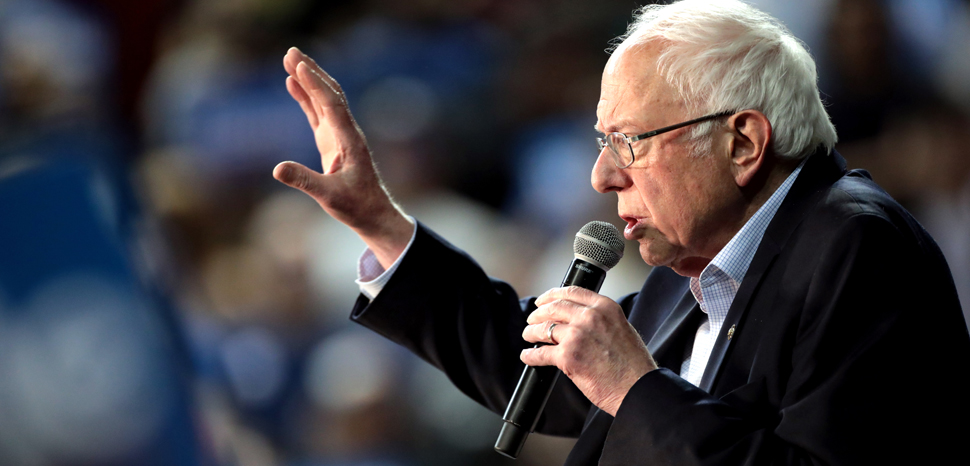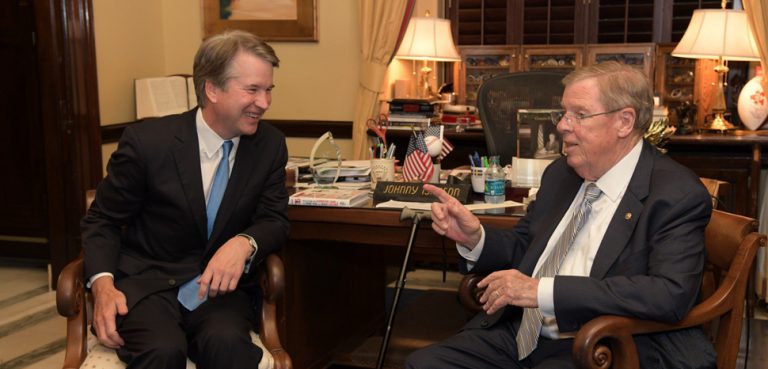US presidential candidate Bernie Sanders has been called many things by many people, but nobody has ever characterized the Senator as laid-back or relaxed. An outsider to the American political system would have to be forgiven for thinking that the senator, known for 8-hour filibusters and restless campaign schedules, has never even taken time to breathe. Despite endorsing Hillary Clinton in 2016, an argument can be made that he never stopped running for president. And that trait, his unbreakable belief that he can’t stop moving, was still on full display just days after sweeping the 2020 Nevada Democratic Caucus.
“We have won the popular vote in Iowa, we won the New Hampshire primary, we won the Nevada caucus, and don’t tell anybody because these folks get very, very agitated and nervous — we’re gonna win here in Texas, and in November we’re gonna defeat Trump here in Texas,” Sanders told a crowd of jubilant supporters in Houston while barnstorming around the state.
Sanders, with his bold uncompromising promises and stiff, determined demeanor, has struck a chord with the American voter. In preparation for the 2020 nomination contest, the senator raised 167 million dollars from an individual donor base that reached nearly 2 million people. It doesn’t look too impressive, at least until you understand those numbers. A lot of terminology is thrown around in campaign finance policy, but the amount of money a candidate raises is usually separated into two categories: small individual donations (typically defined as those under 1,000) from working-class voters, or more commonly, big money donations from the wealthy and corporations.
Out of the $96 million acquired in 2007 by Barack Obama, only 22% was from small donors. In 2012, Mitt Romney’s campaign was only 9% funded by individual contributions. Sanders, unlike his colleagues, has run two presidential campaigns that are 100% backed by small-sized donations and support. From any perspective, it would be irresponsible to not recognize the historical significance of Sanders’ financially independent movement.
But you probably knew all that, because it seems most pundits have occupied their time with marveling at how fast his campaign is moving ahead, instead of peeking into the distance and seeing where it’s going.
So in that spirit, let’s ask that question: What if Bernie Sanders actually wins?
Realistically, here’s the best-case scenario: the typically down-to-earth, brutally honest (sometimes to a fault) 79-year old Vermont Senator takes the presidential oath of office on January 20th, 2021, with a disgruntled now-former President Donald Trump casually live-tweeting the event from the sidelines.
House Speaker Nancy Pelosi is visibly happy but cautious, as are most Democratic Party leaders, at the thought of this self-declared radical defining a new generation of liberal reform and policy. Republicans, still in control of the Senate, solemnly look on, even as their staffers begin focus-group testing new political ads and 25-second C-Span lines designed to rally their Conservative base for the upcoming midterms.
Everyone’s got a different goal; nobody’s on the same page. They are connected only by the irrefutable fact that Bernie Sanders is now president and the realization that even after such a divisive campaign cycle, the real fight has barely even started.
Without becoming the victim of a self-imposed Stockholm Syndrome, or finding ourselves blinded by the star-stricken naivety each new administration seems to suffer from, that is as good as it gets. The severity of national partisanship at this moment makes it hard to see any scenario where Sanders, or Trump, sweep both Houses of Congress along with the presidency. Legislatively with either outcome, both men would have to deal with a divided congress and as an extension, a hand-tied domestic agenda.
There are 35 seats in the Senate up for re-election in 2020, of which Democrats would need to flip at least 4 for a comfortable majority. In order to do this, Democrat candidates would have to win victory in states like North Carolina and Arizona, where Trump won in 2016 by impressive margins. As for Republicans, the House is looking just as out of reach. Currently, House Democrats have almost 30 million dollars on hand, which is twice as much as their GOP colleagues. 32 of the 42 swing-seat Democratic candidates raised over $500,000 last quarter and 36 are starting the election year with at least $1 million in cash on hand. That leaves the DNC with a massive advantage, and the Republicans know it. “This is quite a wake-up call for Republicans — no way getting around it,” Rep. Patrick McHenry (R-N.C.) told Politico in February. “There’s no panacea in this. It’s going to take a lot more grinding work.”
Anything is possible, but this disappointing yet likely outcome would deny a potential President Sanders vast swathes of the reforms he intends on making. While it’s true recent chief executives have made liberal use of presidential authority, there’s only so far you can go with a stamp and signature. You cannot raise taxes on the wealthiest 1%, institute ‘Medicare for All,’ or federally fund college tuition across the country with just the wave of a hand. You need congressional support; you need votes from Republicans.
This isn’t an uncommon obstacle, as many former presidents could personally attest to. Bill Clinton, Barack Obama, George Bush, and Donald Trump have all dealt with a divided congress fairly soon into their terms. The large portion of an adminsitration’s domestic law is passed within the first few months, well before the congressional midterms take place and the balance of power shifts in favor of the opposition. The Bush tax cuts, Obamacare, and the 2017 Tax Reform Act – all key policy initiatives from their respective presidential backers – occurred within the first year of each presidency.
Sanders would lack the united Congress that nearly all those leaders had – a detrimental handicap at such a crucial time. With a Democrat House and Republican Senate, any major legislation passed would need to be relatively bipartisan or have major conservative concessions.
But it’s very possible that Bernie Sanders could circumnavigate that problem entirely.
Despite his high-profile persona of being a feisty idealist, Sanders has actually always been very pragmatic. In 2009, Sen. Sanders nearly voted against the Affordable Care Act because it lacked a public option. “I’m threatening not to vote for it.” He said during an MSNBC interview. “a strong public option” to balance with private plans and control costs would mean it “ain’t a strong bill — that’s a pretty weak bill.”
Sanders didn’t get his public option, and once the political fireworks were over, he realized the bill was clearly better than the current system. He voted for it. “We felt — correctly in the end — that he would come around and not stand in the way of trying to pass it,” Senate Majority-Leader spokesmen Jim Manley told the press. “In my years in the Senate, the leadership spent far more time worrying about the more conservative members of the caucus than Senator Sanders.”
The very same year, Sanders voted to pass Wall Street reforms that didn’t include reinstating Glass-Steagall, which was a cornerstone of his policy agenda. In 2014, he worked with Sen. John McCain to restructure and arguably, save the VA from financial collapse. To a very real extent, this is Sanders in action. His talent for boiling down complex political debates to an honest stump speech, yet still being able to negotiate reasonably with colleagues across the aisle, is a testament to his electoral talent. This trait would undoubtedly serve him well in the White House.
A potential first 100 days of a Sanders presidency could, realistically, see bills that lower-prescription drug costs, boost national infrastructure spending or possibly minor tweaks to the existing federal healthcare apparatus. Anything beyond that would almost certainly need a shift in legislative loyalties. Lacking that, President Sanders would almost certainly be denied all his major domestic reforms within a first term. But, that by no means proves that other initiatives and programs with broader appeal among both parties couldn’t make their way to his desk with presidential backing. Luckily for ‘Bernie Bros,’ domestic law is only a portion of what lies under a president’s purview. Historically speaking, the president’s main area of influence was foreign policy, trade, and diplomatic relations.
The shift into domestic law didn’t begin until the start of the Civil War, when President Lincoln took a much more active interest in congressional legislation so as to keep a steady hand on the war effort. It was under Lincoln that the first federal income tax was levied, which was a meager 3% penalty on Americans with incomes over $800 a year. President Lincoln also re-established the national bank and introduced legal tender that wasn’t backed by gold or silver, but instead, by the treasury. And perhaps most telling of all, the Emancipation Proclamation, which while expected, nevertheless was a historical intervention into U.S. domestic politics.
On foreign policy, a US president has a very wide range of powers. The only main area where Congress has a major say is approving treaties; the definition of which is usually construed by each administration based on how friendly the current congressional body is to their goals.
On global affairs, a President Sanders would be defined as an internationalist with strong sympathies for struggling peoples, but also a severe distaste for any military intervention and a very pronounced protectionist trade policy.
Sen. Sanders is famously against the role of America as a police state, and has consistently striven for a very strict understanding of the War Powers Act, which is the defining U.S. legislation on how far a president can go into a conflict without congressional approval. In fact, the only military interventions Sanders has supported have been cases with clear evidence of genocide. In the 1990s, he supported President Clinton’s decision to try to stop the mass murder in Kosovo. In 2014, he initially backed the intervention in Libya, but later walked it back when confronted with the resulting exodus of native residents and the refugee crisis. The senator has a long record of preferring economic measures and diplomatic unity over military action on the world stage. This can be seen perhaps best in his stalwart opposition to the Iraq War, in which he was one of only a handful of American leaders who, from the beginning, recognized the conflict as reckless.
Whether or not it is due to partisanship or just a continuation of Sanders’ past record, the senator has become more vocal about a non-interventionist approach in the era of President Trump. Most recently in 2019, Sanders co-sponsored a bill in the Senate that would end U.S. involvement in the Yemen Civil War, after international investigations revealed Saudi Arabia’s cruel and inhumane tactics. “The United States Congress is going to reassert its constitutional responsibility over issues of war that have been abdicated for presidents, Democrats and Republicans, for too many years,” Sanders told the press. 54-46, the bill passed resoundingly.
In May of that same year, Sanders came out harshly against U.S. involvement in Venezuela, pressing that nothing could come from it. “The Trump administration is threatening a disastrous military intervention in Venezuela,” Sanders tweeted. “Under our Constitution, only Congress can authorize the use of force. We must make sure the United States does not get involved in yet another war and destabilize another region.”
“Given our history of intervention in country after country in Latin America, the overthrow of [democratically elected Chilean President Salvador] Allende, the overthrow of the government of Brazil, Guatemala, other countries, the idea that we would intervene militarily in Venezuela is literally unbelievable,” Sanders said. “It’s beyond, you know, it’s absurd.”
Foreign policy, however, is not all guns and bombs. On trade, President Trump and Bernie Sanders share very similar protectionist convictions, something they are clearly uncomfortable with. Both men were against President Obama’s Trans-Pacific Partnership, and both were opponents of NAFTA, and both have been critics of America’s trade strategy with China.
This uneasy area of agreement is even something Sanders has sheepishly acknowledged from time to time. When asked about President Trump’s new agreement aimed at replacing NAFTA, the Senator admitted it was a “modest improvement.”
If given the generous freedom most presidents have enjoyed in international affairs, Sanders would almost certainly be successful in cementing large portions of President Trump’s protectionist trade policies. In fact, he would probably be even more extreme on issues like Chinese plastic and German steel. An increase in tariffs as well as penalties for U.S. businesses who operate in Asia would be likely, and a third attempt at negotiating a North American Trade Agreement would be inevitable.
While it is hard to determine any politician’s knee-jerk reactions to military scenarios, it is likely that a Sanders foreign policy would do everything in its power to avoid conflict. Potential exceptions based on his record would be hot-spots for global genocide, possibly in Africa or Asia. Regardless, Sanders would almost certainly drastically scale down U.S. presence in the Middle East and Europe, as well as advocate for a two-state solution in the Israeli-Palestinian conflict.
As with all presidents, sometimes policy notions dwindle in importance as the men who hold them face the reality of American politics. Once bold, inflexible positions slowly become bendable, hapless preferences. This painful death of a once giddy idealism leaves its mark on many politicians, but if anyone has shown a commitment, good or bad, to the ideas they believe in, it is Sen. Sanders.
Bernie Sanders and Donald Trump are both different men with differing goals and ideas but the beginning of their administrations could mirror each other in style. Like Trump, Sanders would have to rely heavily on presidential orders and vilifying the media, and the extremities of their political ideas would mean they would have to depend on less experienced insiders in the Pentagon and on Capitol Hill to be their loyal foot soldiers. This necessary shakeup, as shown by President Trump, does partially lead to chaos. But in the end, it’s something our government has shown it can weather.
A Sanders presidency would be embattled, controversial, amateurish in style and lack major domestic systemic overhauls. It would depend on bipartisan support from Senate Republicans and continue President Trump’s strategy of fighting mainstream media’s negative narrative. His foreign policy, while a far cry from previous administrations, would cement Trump’s tilt towards a protectionist approach to trade.
That being said, Sanders would still bring change here at home; just not the revolution he’s so fond of promising. His nominees to the courts would help counter Trump’s inundation of Republicans to federal benches, and his relations with the Conservative-controlled Supreme Court would become strained as they started challenging some of his more progressive decisions.
Whether or not you’d find the view inside a Bernie Sander’s presidency agreeable, it’s hard to deny its presence codifies the strong winds of change blowing across the nation. In 2016, America chose an unabashed, Conservative populist to lead. In 2020, it’s quite possible they’ll choose a fierce, progressive leftist populist in Trump’s place.
If faced with this choice, it would be hard for anyone to see a future for the politics of moderation from the past. But that then begs a key question: Did those who once practiced this moderation kill it with their own inaction and self-importance? Maybe. Sanders and Trump seem to think so. Most convincingly, they’re very existence seems to confirm it.
The views expressed in this article are those of the authors alone and do not necessarily reflect those of Geopoliticalmonitor.com or any institutions with which the authors are associated.




